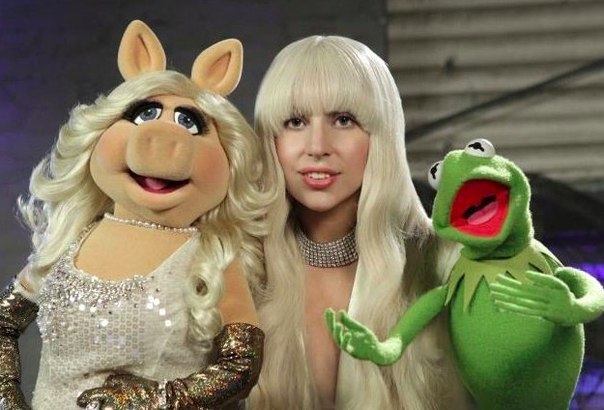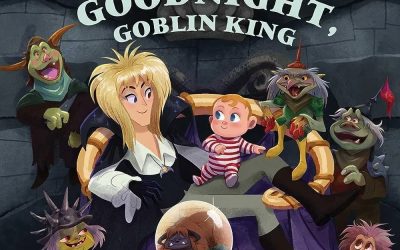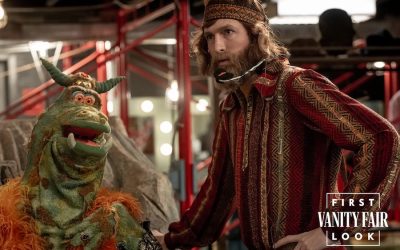Part 1 – Part 2
 China: the beautiful and mysterious empire of the Far East. Japan: the other beautiful and mysterious empire of the Far East. How could I ever choose between them?
China: the beautiful and mysterious empire of the Far East. Japan: the other beautiful and mysterious empire of the Far East. How could I ever choose between them?
One of them is full of Communists, the other is full of robots. In Japan, the hand can be used as a knife. On the other hand, China invented kites, and everybody knows how great kites are.
Oh, I can’t decide! Luckily, my friend Big Bird visited both countries, and he can help us out. Both of his trips — 1982’s Big Bird in China and 1988’s Big Bird in Japan — were recently released on DVD, and watching those, we can determine once and for all which country is better.
To start with, Big Bird spends 75 minutes in China and only 60 minutes in Japan — which obviously means that China is worth spending more time in. Unless it means that you can use your time more efficiently in Japan. It’s hard to say. We’d better get started…
Big Bird says, “Everybody in America wants to know about China, right?” — and I suppose that must be right, because Big Bird has unerring instincts in these matters. “Well, what a good thing it would be if a great big American bird went to meet that beautiful Chinese bird! I mean, she could tell me everything about China, and then I could come home and tell everybody here!”
 That beautiful Chinese bird is a phoenix, which Big Bird has seen on a scroll in a Chinatown junk shop. Of course, the phoenix is legendary — but Big Bird is too, so let’s not split hairs. The owner of the shop warns that it won’t be easy to find the phoenix — Big Bird will have to find the four places pictured on the scroll, and in each place he’ll get a clue from a monkey. He has to solve the clues quickly — if the sand runs out, then the phoenix will disappear. They don’t know what sand it’s referring to, but that’s what the scroll says.
That beautiful Chinese bird is a phoenix, which Big Bird has seen on a scroll in a Chinatown junk shop. Of course, the phoenix is legendary — but Big Bird is too, so let’s not split hairs. The owner of the shop warns that it won’t be easy to find the phoenix — Big Bird will have to find the four places pictured on the scroll, and in each place he’ll get a clue from a monkey. He has to solve the clues quickly — if the sand runs out, then the phoenix will disappear. They don’t know what sand it’s referring to, but that’s what the scroll says.
Now, you or I might say, do you have a slightly less complicated scroll in the back somewhere? But Big Bird thinks this sounds like fun, so they’re off, going across the world on what could easily turn out to be an ancient Chinese snipe hunt.
 Before you know it, Big Bird and Barkley are in a little boat being poled to shore. In China. Big Bird says, “Thank you very much, ma’am!” and then that’s it, from here on in, it’s all China. There’s no mention of a plane or anything. They’re in Chinatown, and then they’re on Sesame Street — and then they’re on this little boat, and that’s all there is to it. The whole show is like that, so we might as well get used to it.
Before you know it, Big Bird and Barkley are in a little boat being poled to shore. In China. Big Bird says, “Thank you very much, ma’am!” and then that’s it, from here on in, it’s all China. There’s no mention of a plane or anything. They’re in Chinatown, and then they’re on Sesame Street — and then they’re on this little boat, and that’s all there is to it. The whole show is like that, so we might as well get used to it.
So, this is China. Big Bird is looking for the Great Wall of China first, and they wander through some rather unprepossessing scenery, just checking out walls. Some people carry water. A bunch of guys ride by on bikes. There’s a fence with posters on it. The music is doing most of the work so far.
 Then they come across a crowd of little girl ballerinas dressed like ducks, doing a complicated dance with no adult supervision. They dance and dance. Big Bird joins them for a while. Some people standing nearby watch them. Big Bird wanders away, and the ducks are still dancing. Is this a common occurence in China, that little girls spontaneously break into public line dances? There’s no explanation for this sequence, which goes on for over a minute; it just is what it is.
Then they come across a crowd of little girl ballerinas dressed like ducks, doing a complicated dance with no adult supervision. They dance and dance. Big Bird joins them for a while. Some people standing nearby watch them. Big Bird wanders away, and the ducks are still dancing. Is this a common occurence in China, that little girls spontaneously break into public line dances? There’s no explanation for this sequence, which goes on for over a minute; it just is what it is.
Next, we see Barkley in full show-off mode, just goofing around and attracting a crowd. He’s in the middle of a crowded market street, and everyone is gathering, not sure what to make of this funny, floppy creature. In a very brief clip, this complicated dynamic develops between Barkley and the crowd. They all want to get close and look at him, but he’s unpredictable, and a little scary. So when his back is turned, they all step forward — but then he turns to look at them, and they all step back. He puts his head in a cart and they step forward, he turns and barks, and they step back. It’s fantastic.
 Personally, I don’t have a lot of childhood memories of Barkley. He didn’t really become a character until 1978, by which time I was preoccupied with The Muppet Show and not watching Sesame Street anymore. They never made many Barkley toys, I never saw much of him, and I always figured he was just another third-tier Muppet with no real character.
Personally, I don’t have a lot of childhood memories of Barkley. He didn’t really become a character until 1978, by which time I was preoccupied with The Muppet Show and not watching Sesame Street anymore. They never made many Barkley toys, I never saw much of him, and I always figured he was just another third-tier Muppet with no real character.
Now that I’m seeing him in action, though, Barkley has revealed his true colors; he’s a walking cuteness delivery system par excellence. He’s in constant motion, jumping into a new situation with a friendly yelp, then backing off with a worried growl — shaking his head, cocking an ear, and then jumping right back in. He’s fantastic. There’s no reason ever to not be looking at Barkley. He runs this show, effectively stealing every shot from Big Bird whenever the camera is pointed in his direction. I don’t get it. Why isn’t Barkley the most famous character on Sesame Street?
Anyway, back to the show. Somehow, Big Bird gets ahold of a little motor scooter. One minute, he’s standing around in a market, and the next minute, he’s zooming along, with Barkley in the sidecar. To each according to his needs, I guess — Big Bird needed a motor scooter, and somebody gave him one.
 “That’s the Forbidden City, Barkley!” he chirps. “Ah, and that’s the, uh… gee, I don’t know what that is. But that’s Mao’s tomb! I think.” And that in a nutshell is pretty much how they treat geography in this show. I don’t know what city they’re in, or where this stuff is in relationship to where we just were, or even what the Forbidden City actually is. Obviously, we’re not about to get into a huge history lesson about Mao, or how his Great Leap Forward starved twenty million people. So, instead, we get a literal drive-by of his tomb, and then it’s off to another line dance.
“That’s the Forbidden City, Barkley!” he chirps. “Ah, and that’s the, uh… gee, I don’t know what that is. But that’s Mao’s tomb! I think.” And that in a nutshell is pretty much how they treat geography in this show. I don’t know what city they’re in, or where this stuff is in relationship to where we just were, or even what the Forbidden City actually is. Obviously, we’re not about to get into a huge history lesson about Mao, or how his Great Leap Forward starved twenty million people. So, instead, we get a literal drive-by of his tomb, and then it’s off to another line dance.
Our next number is performed by a bunch of adults, doing a complicated tai-chi type dance with wooden swords. On the sidewalk. Don’t really know why. Do Chinese people just stand in rows and do line dances all day? They love their line dances, these people. So far, China is extremely confusing.
 Big Bird wanders into a schoolyard, which is full of extremely cute little kids. The kids jump rope, and tangle Barkley up in their rope — lucky kids. And then, for no reason at all — another dance! China is one big unsupervised dance party!
Big Bird wanders into a schoolyard, which is full of extremely cute little kids. The kids jump rope, and tangle Barkley up in their rope — lucky kids. And then, for no reason at all — another dance! China is one big unsupervised dance party!
Luckily, the Chinese Soul Train is pulling into the station. Big Bird meets Xiao Fu, the only human being in China who speaks English. Xiao Fu is amazingly cute, just totally winning and compulsively watchable. She’s the human equivalent of Barkley. She sings a little song, teaching her new friend some Chinese words: wo ai ni means I luff you. It sounds like they taught her the lines phonetically, but even so, she’s really good.
 She looks at the scroll and sees that the wall Big Bird is looking for is the Great Wall. “Great? It’s tremendous!” Big Bird says. “But what is it?” And then Xiao Fu sighs. It’s a sincere little exasperated sigh. You can’t teach that kind of cuteness phonetically; it’s got to come natural. This kid is a pro.
She looks at the scroll and sees that the wall Big Bird is looking for is the Great Wall. “Great? It’s tremendous!” Big Bird says. “But what is it?” And then Xiao Fu sighs. It’s a sincere little exasperated sigh. You can’t teach that kind of cuteness phonetically; it’s got to come natural. This kid is a pro.
There’s a bunch of cute walking scenes, and then they end up on the Great Wall of China, which was apparently within easy walking distance of the school. Or they hitched a ride, or they teleported or something. It’s hard to say.
“Boy, that’s some wall,” says Big Bird. “Now what?” Which is pretty much the attitude of the whole show, as regards the history and geography of China.
They split up to find the clue, and they’re visited by the Monkey King — a Chinese legend represented here by a kind of fey acrobat guy with a painted face and a yellow jumpsuit. He hops around and torments Barkley, elciting adorable confused growls.
 The Monkey King blinks his eyes unnervingly, and gives them the clue in Chinese. Xiao Fu translates: “The stone soldiers stand guard over the glass chessboard.”
The Monkey King blinks his eyes unnervingly, and gives them the clue in Chinese. Xiao Fu translates: “The stone soldiers stand guard over the glass chessboard.”
“What does THAT mean?” Big Bird asks. “I don’t know,” says Xiao Fu. “I don’t understand theater people.”
Next, we’re off to the Ming Tombs to find the next picture on the scroll. “Hmm, I wonder who’s buried in Ming’s Tomb,” Big Bird muses. Again, there’s no context and no geography; the word “emperor” never gets used. China is basically just one big park that you can play in. You can comfortably stroll from one site to another, anywhere in the whole country, within a single sunny afternoon.
 They quickly pick up another couple clues, and then they sit by a river, where a storyteller is explaining the legend of the phoenix to a group of kids. Pretty music plays as they listen to the story of a demon king trapping the sun in a cave; we get nice shots of the river, the trees, Xiao Fu snuggling up to Barkley.
They quickly pick up another couple clues, and then they sit by a river, where a storyteller is explaining the legend of the phoenix to a group of kids. Pretty music plays as they listen to the story of a demon king trapping the sun in a cave; we get nice shots of the river, the trees, Xiao Fu snuggling up to Barkley.
The show’s been moving in this direction the whole time, but at this point, it just gives itself over to a kind of dream state. It’s drifting from one thing to the next, and you just find yourself gently pulled along through the scenes, from myths to dances to little boys wearing ties. When the storyteller finishes, the children all get up and play a follow the leader game through the rocks. Big Bird waves goodbye to them, and then he turns around and Barkley is gone. The storyteller turns into the Monkey King, but Big Bird takes off without his clue — he’s got to find Barkley. Just like in dreams, the story can take a sudden turn, and things transform or disappear when you’re distracted by something else.
 There’s more pretty scenes. Barkley dances with some Chinese lions. Big Bird and Xiao Fu sit and look at the mountains, and sing their song again. Then they steal another boat, and sail down the river, where they figure out the explanations to all of the Monkey King’s mysterious clues.
There’s more pretty scenes. Barkley dances with some Chinese lions. Big Bird and Xiao Fu sit and look at the mountains, and sing their song again. Then they steal another boat, and sail down the river, where they figure out the explanations to all of the Monkey King’s mysterious clues.
This is a quiet, contemplative show. It’s a good show to watch when it’s snowing and cold, and you’ve been shoveling the driveway, and you want to come inside, where you can sit and dream of a far-off land with friendly people who smile and wave at you. You can just relax, and float down the river, watching all of your clues come together, one after another.
They find the phoenix, played here by a special effect and then by a dancing woman. She sings another pretty song about the beauty of China, and then it’s pretty much time to wrap things up and go home.
 Big Bird promises to tell everyone what he’s learned about China, so I’ll do the same. Here’s everything I know about China:
Big Bird promises to tell everyone what he’s learned about China, so I’ll do the same. Here’s everything I know about China:
China is a magical fantasy land populated entirely by show people, who sing and dance and make fey hand gestures. They give away boats and scooters to anybody who wants them. There are no cities in China to speak of, just tourist attractions, and everybody dances at a moment’s notice.
China is basically “Fame,” without the gritty realism.
“I luff you, Big Bird!” says Xiao Fu, and you really do believe it. Yes, China as represented here is entirely unreal, but there are definite advantages to living in a pastoral fairytale kingdom like this. At least, it’s a nice place to visit for 75 minutes. Watching the show is like taking a soothing little trip; you come back refreshed, like your imagination has had a massage.
If only there was such a place as China. Japan has a lot of catching up to do, if it’s going to win this competition.
Part 2: Japan





